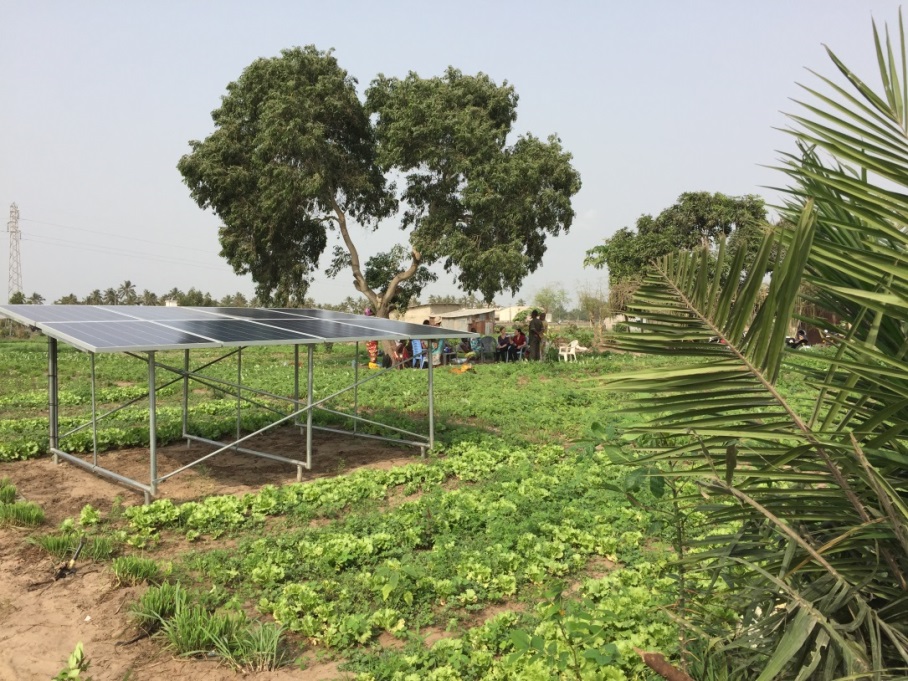Solar Irrigation Kits In Kenya
Grekkon Limited’s solar irrigation kits in Kenya utilise soalr energy as the primary power source to pump water, and distribute it in the farm. Our solar irrigation kits are a clean energy technology that reduces greenhouse emissions. They substitute fossil fuels as an energy source. The company supplies and installs these kits within the east Africa region mainly for smallholder farmers
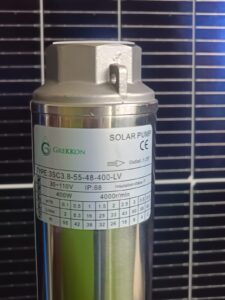
A Grekkon solar submersible water pump for smallholder farmers
Solar Irrigation Kits In Kenya
Components
- A water source. This will be a deep or shallow well, a dug out or natural water reservoir, a river, lake or a an artificial water storage unit
- Mounting structure for solar photovoltaic (PV) panels
- A solar pump. This will be either a submersible solar electric water pump (ideal for wells), or a surface solar water pump. The pump will be fixed or portable depending on the size
- A solar water pump controller
- The irrigation system. Most solar powered irrigation systems have the drip irrigation kit as the watering component. This is because it operates under low volume, low pressure. However, some farmers opt also for the rain hose irrigation kit depending on the crop type, available water volume, and the pumping pressure. The rain hose kit works best at high water volume, under high pressure
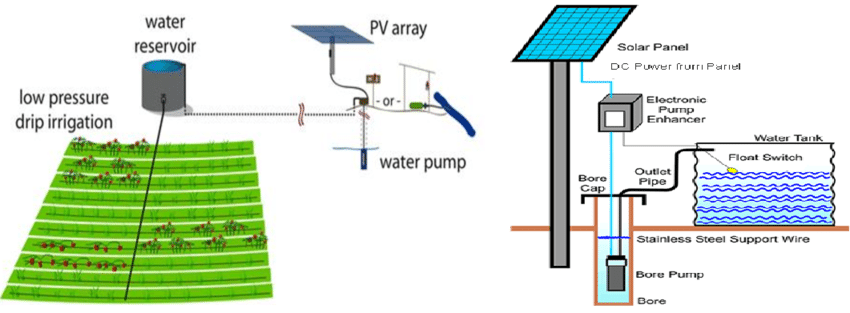
Components of a solar irrigation kit
Solar Irrigation Kits In Kenya
How they work
- Electricity to run the solar water pump is generated by solar PV panels. They absorb the sun’s energy converting it to direct current (DC) electical energy
- This DC energy flows into an inverter/ controller which converts it to alternating current (AC) electrical energy
- The AC power is channeled to the motor, which runs the pump
- The pump distributes water to the irrigation system
The number of panels used depends on the motor size. The larger it is, the higher the number of PV panels required
A farmer will opt to irrigate by pumping directly to the irrigation system, or to an elevated storage unit, from which the water flows to the irrigation system by gravity
Solar Irrigation Kits In Kenya
Benefits
i. It allows for water pumping in electricity off-grid locations by generating its own solar electric power
ii. It reduces the emissions of greenhouse gases as it does not run on fossil fuels
iii. Farmers produce all your round so long as irrigation water is available
iv. It has near zero maintainance and operating costs, as there’s no drudgery during irrigation
v. There are no opertional costs unlike fossil fuel powered water pumps that require diesel or petrol purchases to run
Solar Irrigation Kit Price In Kenya
Drip Irrigation Kit
| Acreage | Price (Kes) |
| 0.25 | 105,000 |
| 0.5 | 145,000 |
| 1 | 230,000 |
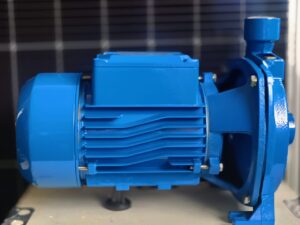
A Grekkon surface solar water pump for irrigation
2. Rain hose kit
| Acreage | Price (Kes) |
| 0.25 | 85,000 |
| 0.5 | 110,000 |
| 1 | 145,000 |
Solar Irrigation Kits In Kenya
FAQs
1. What is a solar power irrigation system?
It is a unit composed of a solar pump, and an irrigation kit
2. Do solar panels work at night?
No they don’t. However, a farmer can choose to set up a battery to store power during the day, to power the irrigation system at night
3. Do solar panels work in the rain?
They work optimally under clear skies. Their efficiency is dramatically reduced with heavy cloud cover
4. How many solar panels does it take to run a water pump?
It depnds on the size of the motor attached to the solar pump. The greater it is, the higher the number of solar panels required
5. What is the weakness of a solar pump?
They do not work if there is no solar energy provision
6. What solar pump is best for agriculture?
Grekkon limited has the best solar powered water pumps for agriculture because they are designed for small, and medium holder farmers in Africa who constitute about 87% of the farmeing community on the continent
7. How long do solar water pumps last?
For more than 20 years with regular servicing
8. Does a solar water pump need a battery?
No. It will work with the current received directly from the solar panels
9. How deep can a solar pump work?
It depends on the head of the submersible solar pump. Some work in wells as deep as 500M
10. Do you need an inverter with solar panels?
Yes if the pump uses AC current. The inverter will convert the DC to AC. However, a DC pump will not require an inverter
Fossil fuel powered water pumps carbon emissions calculation
The downside of fossil fuel powered water pumps is CO2 emissions, which contribute to global warming, the chief reason for negative climate change being experienced today. To calculate the quantity of CO2 emission from a diesel water pump, multiply the fuel usage in litres by a factor of 2.67. For example; a pump that consumes 100 litres of diesel per month emits 267kgs of CO2 emissions monthly. To calculate the quantity of CO2 emission from a petrol water pump, multiply the fuel usage in litres by a factor of 2.3035. For example; a pump that consumes 100 litres of petrol per month emits 230.35 kgs of CO2 emissions monthly.
Related Posts
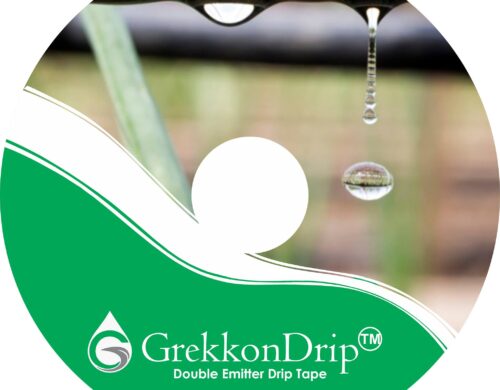
Drip Irrigation System
Every drip irrigation system in Kenya by Grekkon Limited supported by a HDPE or PVC line. We are the largest drip irrigation kits suppliers...
Drip Irrigation Lines and Pipes
In this drip irrigation lines and pipes piece, we will answer commonly asked questions in relation to drip irrigation 1.What is drip...

